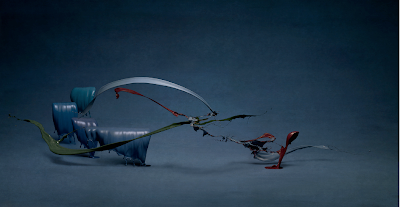Starting this project, I honestly had no idea what to do. I thought that I could perhaps make some dumb scene out of candy and call it a day. Then I toyed with making a famous painting out of food, but I wanted people to really be able to eat something, and food would go stale if I did that. The painting I had chosen was a Salvador Dali, which got me thinking. I love surrealism and the absurd. I wanted to play off of that, and having just completed a project on Magritte, I got to thinking.
That’s when I knew what I wanted to do. I wanted to make cupcakes. Yes, real cupcakes, but I also wanted there to be fake cupcakes, which looked real.
So I bought all the ingredients to make cupcakes, and as I picked them out, I picked sprinkles that looked almost fake and colors that were bright and could be fake. I wanted the real ones and the fake ones to blend in perfectly. I used yellow and green, not only for a spring theme, but they are colors people would enjoy eating, and would also be far enough from plain white and would seem believable.
When making the cupcakes, I chose to use expansion foam, which rises, just like cupcakes would if cooked. I cut the foam down, and the texture looks just like cake, so if someone cut them open, they would look real too! I also wanted to go about making them like I would the real cupcakes. I put them in the liners and then I let them dry and then I painted the tops so if any “cake” part showed, it would be the same color as the real ones. I then used Spackle to cover the tops just like normal frosting; however, I added some acrylic paint for tinting to add some realism.
For the decorative tops, I bought decorating tips for frosting, and used Spackle as well. I did, however, match the colors of the frosting exactly. I added acrylic paint to Spackle and whipped it so it would have the appearance of frosting, and I added them to a bag and put a decorating tip on and decorated them like real cupcakes. I made them have ridiculous designs as well. The real cupcakes were frosted with the same exact tips and in the same styles so the fake ones would blend in.
While working in them, some people walked in and thought they were real! I was pleased that they created this effect. I’m really pleased with how they turned out, however I would have used less foam because some of them got really huge! I also wish I could make more so that I can get better at decorating, which is more of a fault of mine for not being an awesome cupcake decorator. It’s much harder than it seems!
I also wish I had a cupcake tower, but I didn’t want to buy one just for this project, it was getting rather expensive. I do love these cupcakes, and they look really good, and just like the real ones. I also got a sense of baking while making them, which I thought as pretty cool.



































